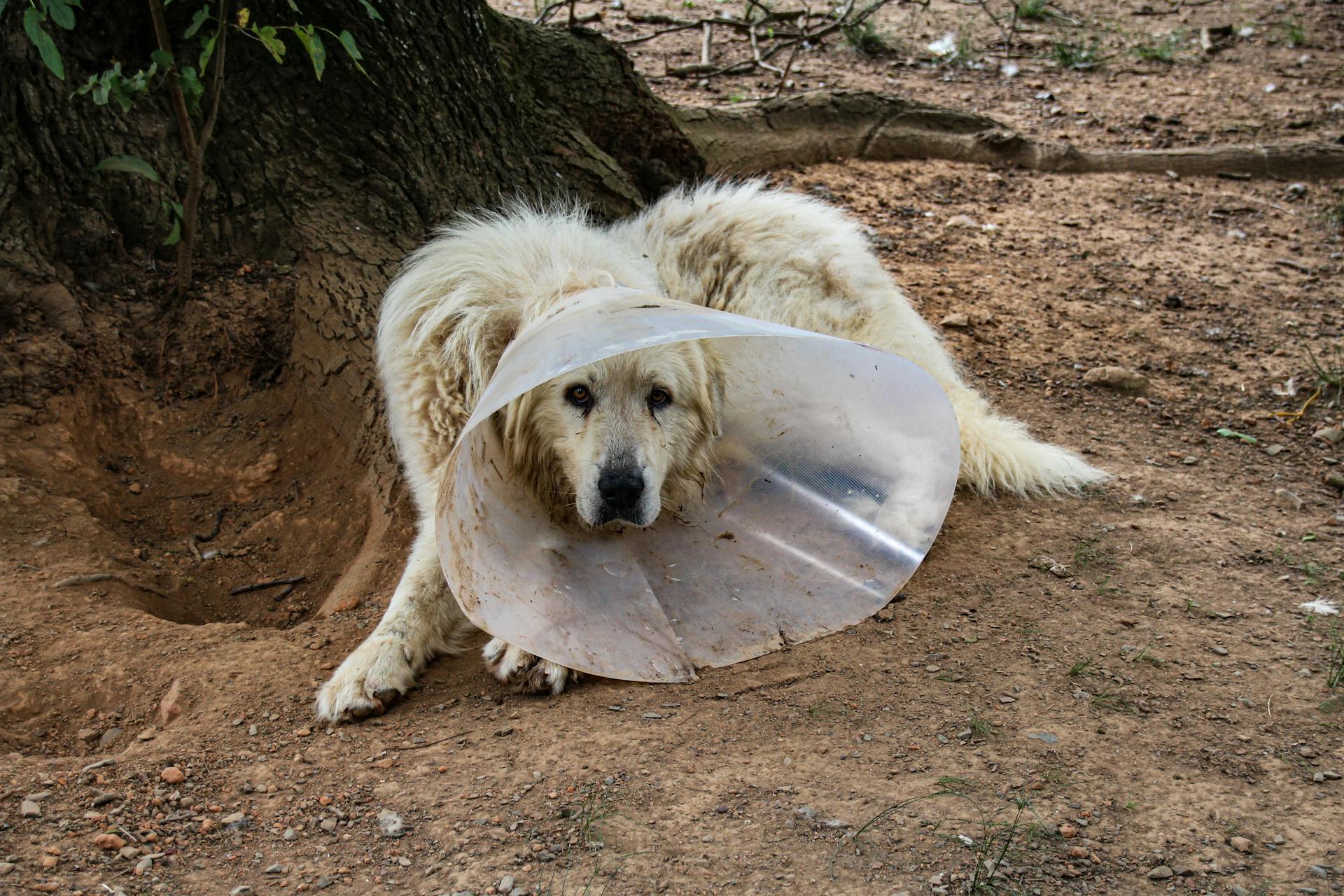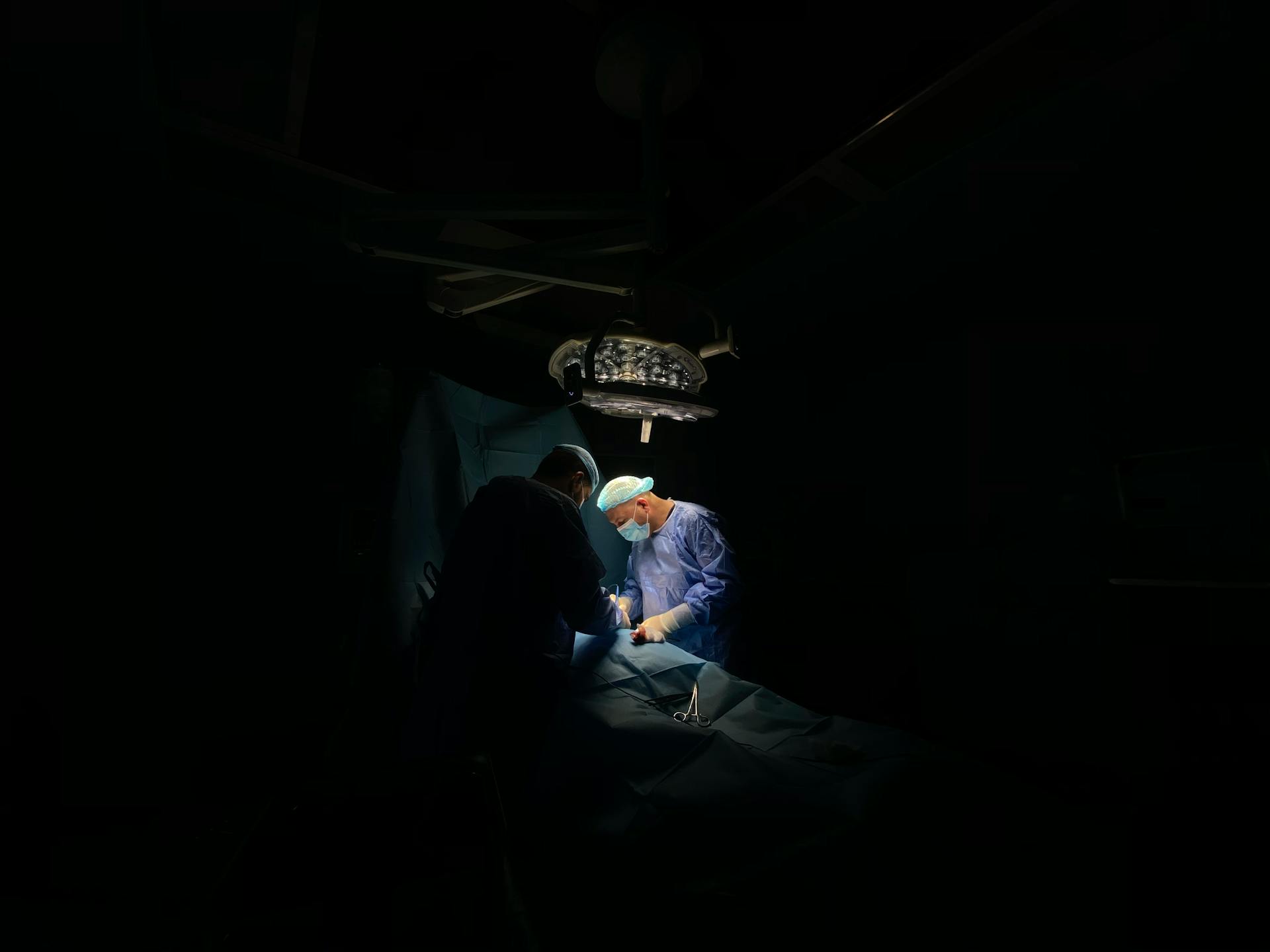
Mammary gland tumors in cats are a serious health issue that requires attention.
These tumors are most commonly found in unspayed or intact female cats, with a higher risk after the age of 10.
Spaying your cat before the first heat cycle can significantly reduce the risk of developing mammary gland tumors.
Cats with a family history of mammary gland tumors are also more likely to develop them.
Symptoms and Diagnosis
A lump or swelling along your cat's mammary chain is the most common symptom of a mammary gland tumor. This lump can be soft or firm, widespread or clearly defined. You may also see ulceration (sores) as well as discharge from the nipples.
In cases of metastasis, where the tumor has spread, you may see other signs of illness, such as difficulty breathing. Your vet may also see lymph node swelling. Cats with malignant disease may lose weight and have a weakened immune system, leading to systemic infections.
You might like: Cancerous Lump on Dog
Here's a list of possible symptoms to look out for:
- Swollen glands
- Painful abdomen
- Discharge from one or more glands
- Ulceration of the skin on the abdomen
- Lethargy
- Weight loss (at later stages)
A veterinarian will be suspicious of a mammary gland tumor based on appearance alone, but accurate diagnosis requires microscopic examination of tissue. A biopsy will be required to confirm the diagnosis and determine the type, origin, grade, and stage of the tumor.
Symptoms of Mammary Gland Tumor
If you notice a lump or swelling along your cat's or dog's mammary chain, it could be a sign of a mammary gland tumor.
The mass may be soft or firm, and it may be widespread or clearly defined.
You may also see ulceration or sores, as well as discharge from the nipples.
In more advanced cases, dogs may show weight loss, poor appetite, vomiting, diarrhea, and/or breathing difficulties.
Cats with malignant mammary tumors may lose weight and have a weakened immune system, leading to systemic infections.
Some mammary gland tumors can cause difficulty breathing if the cancer has spread to the lungs.
Your veterinarian may also see lymph node swelling if the tumor has metastasized.
Diagnostics Performed
A diagnosis of a mammary tumor is confirmed with a biopsy, which is the most reliable way to distinguish a benign mass from a malignant one.
A complete physical exam is performed to look for outward and inward signs of disease, and an aspirate of the affected gland can rule out other tumors that mimic a mammary mass.
A complete blood count, serum chemistry panel, and urinalysis are done to determine if there are effects of the cancer on body functions and to ensure the patient is healthy enough to handle future treatments.
Malignant mammary tumors can spread to lymph nodes found in the axillary and inguinal region, so a small needle is used to take cell samples from these lymph nodes to look for spread.
Chest x-rays and abdominal ultrasound are used to look for spread to the lungs and internal organs or lymph nodes.
Here are the diagnostic tests that may be performed to diagnose a mammary tumor:
- Physical exam
- Aspirate of the affected gland
- Biopsy
- Complete blood count
- Serum chemistry panel
- Urinalysis
- Lymph node sampling
- Chest x-rays
- Abdominal ultrasound
About Half

About half of the mammary tumors in dogs are malignant, which means they have the potential to spread and cause serious health issues.
The risk of your dog getting mammary cancer is influenced by several factors, including spay status and age. If your dog is spayed before her first heat cycle, the risk drops to 0.5%.
Here's a breakdown of the risk factors:
It's worth noting that the risk of mammary cancer is higher in dogs that are spayed later in life.
Treatment and Management
Prompt surgery to remove all affected tissue is critical in preventing the cancer from metastasizing to other parts of the body.
Surgery is usually the gold-star treatment for mammary tumors, and in most cases, the surgeon will remove the tumor itself or the entire affected mammary gland.
Removing the whole mammary chain, along with the accompanying lymph nodes, may also be recommended by the veterinary surgeon.
Chemotherapy following complete surgical removal is likely to be the best course if a cure is the goal, but it's essential to realize that this type of tumor is rarely cured once it has become malignant.
Intriguing read: Pyometra in Cats Surgery Cost
Recurrence or metastasis is likely, and survival times are usually not longer than a year.
Spaying before the cat's first heat cycle is the single best way to prevent the possibility of your cat developing mammary cancer.
Wide surgical resection is recommended for malignant mammary masses, and benign tumors require less aggressive surgical margins.
Surgery is the only treatment required for benign tumors and some malignant tumors, but dogs with large tumors, high-grade tumors, tumors that have already spread, and certain histological types are at higher risk for regrowth and spread following surgery.
Non-Steroidal Anti-Inflammatory Drugs (NSAIDs) play a role in treating many different types of carcinomas, including mammary carcinoma, and can benefit dogs with mammary carcinoma.
For more insights, see: Types of Dog Tumors with Pictures
Recovery and Prognosis
Recovery and prognosis for mammary gland tumors can be a challenging and emotional experience for cat and dog owners.
Surgery is often the first line of treatment, but chemotherapy and/or radiation therapy may be recommended after surgery.
Spaying before the cat's first heat cycle is the single best way to prevent the possibility of your cat developing mammary cancer.
For dogs with malignant tumors, surgery alone can be effective in about half of cases, but the remaining 50% are at risk for the spread of their tumor.
Dogs with inflammatory mammary carcinoma and mammary sarcomas have a poor prognosis, with survival times usually less than one year.
In cats, a poor prognosis is associated with lymph node metastasis or other metastasis, tumor size and stage, higher grade tumors, conservative surgery, breed, increasing age, and vasculo-lymphatic invasion.
Cat Recovery and Management
After surgery, chemotherapy and/or radiation therapy may be recommended. This can help manage the tumor, but it's essential to understand that a cure is rarely possible once the tumor has become malignant.
Chemotherapy following complete surgical removal is likely the best course if a cure is the goal. However, recurrence or metastasis is still likely, and survival times are usually not longer than a year.
Spaying before the cat's first heat cycle is the single best way to prevent the possibility of your cat developing mammary cancer. This simple step can significantly reduce the risk of this type of tumor.
Prognosis

If your cat develops a mammary gland tumor, the prognosis is generally poor, with recurrence or metastasis likely and survival times usually not longer than a year.
Spaying your cat before her first heat cycle is the single best way to prevent the possibility of her developing mammary cancer, which can greatly improve her chances of a good outcome.
Dogs with malignant mammary tumors have a variable prognosis, with about half of them having an excellent prognosis with surgery alone.
However, dogs with certain factors such as lymph node metastasis, high-grade tumors, or large primary tumors have a poor prognosis and may be at increased risk for metastasis.
Cats with malignant mammary tumors also have a poor prognosis, with factors such as lymph node metastasis, tumor size and stage, and high-grade tumors all contributing to a worse outcome.
In fact, surgery can be curative for approximately 75% of dogs with mammary gland tumors, but cats with this type of tumor generally have a poor prognosis.

The good news is that early detection of tumors is key for long-term survival, so regular veterinary check-ups and self-exams can help catch any issues early on.
Dogs with inflammatory mammary carcinoma and mammary sarcomas have a particularly poor prognosis, with survival times usually measured in weeks or months.
Overall, understanding the prognosis for mammary gland tumors can help you and your veterinarian make informed decisions about treatment and care.
Cancer
Mammary tumors account for 42% of all tumors in female dogs and 82% of reproductive tumors.
The lifetime risk of a female intact dog developing a malignant mammary tumor is 23-34%.
Most often, these tumors are found in the regional lymph nodes, lungs, adrenal gland, kidney, heart, liver, bone, brain, and skin.
The mean age for development of a mammary tumor is 6-10 years.
Mammary tumors in male dogs are usually malignant.
Multiple mammary tumors are common.
General Information
Mammary gland tumors in cats are often associated with genetics, age, and exposure to carcinogens. Some cats are more prone to developing cancer due to their genetic makeup.
The risk of cancer increases with age, and exposure to carcinogens like pesticides can also play a role. Early spaying is a crucial factor in reducing the risk of mammary tumors.
Spaying your cat at an early age significantly decreases the risk of mammary cancer by reducing exposure to hormones like estrogen and progesterone.
Causes of Mammary Gland Tumor
Cats with a genetic predisposition to develop cancer are more likely to get mammary gland tumors.
Some cats are born with a higher risk of developing cancer due to their genetic makeup.
The risk of cancer increases with age.
Exposure to carcinogens, such as pesticides, can also contribute to the development of mammary gland tumors.
Early spaying can significantly decrease the risk of mammary cancer in cats.
Spaying before a cat's first heat cycle is especially important in reducing the risk of mammary cancer.
Removing your cat's ovaries and uterus through spaying reduces exposure to hormones like estrogen and progesterone.
Too many of these hormones can cause abnormal growth of mammary tumors in cats.
Spaying is not a treatment for cat mammary gland tumors if the cancer has already spread throughout the body.
What Are Cat
Cats are small to medium-sized mammals that belong to the family Felidae. They have a typical weight range of 8-12 pounds and a lifespan of around 12-17 years.
Domestic cats are known for their agility and flexibility, with flexible spines that allow them to twist and turn with ease. This flexibility also helps them to right themselves in mid-air, making them expert jumpers and climbers.
Cats are carnivores and require a diet rich in protein from animal sources. In the wild, they primarily feed on small mammals, birds, and reptiles.
Frequently Asked Questions
How long do dogs with mammary cancer live?
Dogs with mammary cancer typically have a poor prognosis, with survival times ranging from weeks to less than a year. The exact survival time varies depending on the type of cancer and individual factors.
Is a mammary tumor fatal in dogs?
While most malignant mammary tumors in dogs are not fatal, the risk of fatality depends on the type and stage of the tumor at diagnosis. Early detection and treatment can significantly improve a dog's chances of recovery.
How do you treat mammary gland tumors in dogs?
Surgery is the primary treatment for mammary gland tumors in dogs, typically involving removal of the tumor or affected gland, unless the cancer is inflammatory or metastatic
Sources
- https://www.mdpi.com/1422-0067/25/5/2891
- https://www.petmd.com/cat/conditions/cancer/c_ct_mammary_gland_tumor
- https://www.dvm360.com/view/what-you-need-know-about-mammary-gland-tumors-proceedings
- https://hospital.cvm.ncsu.edu/services/small-animals/cancer-oncology/oncology/canine-mammary-tumors/
- https://www.vet.cornell.edu/departments-centers-and-institutes/riney-canine-health-center/canine-health-information/mammary-cancer
Featured Images: pexels.com


